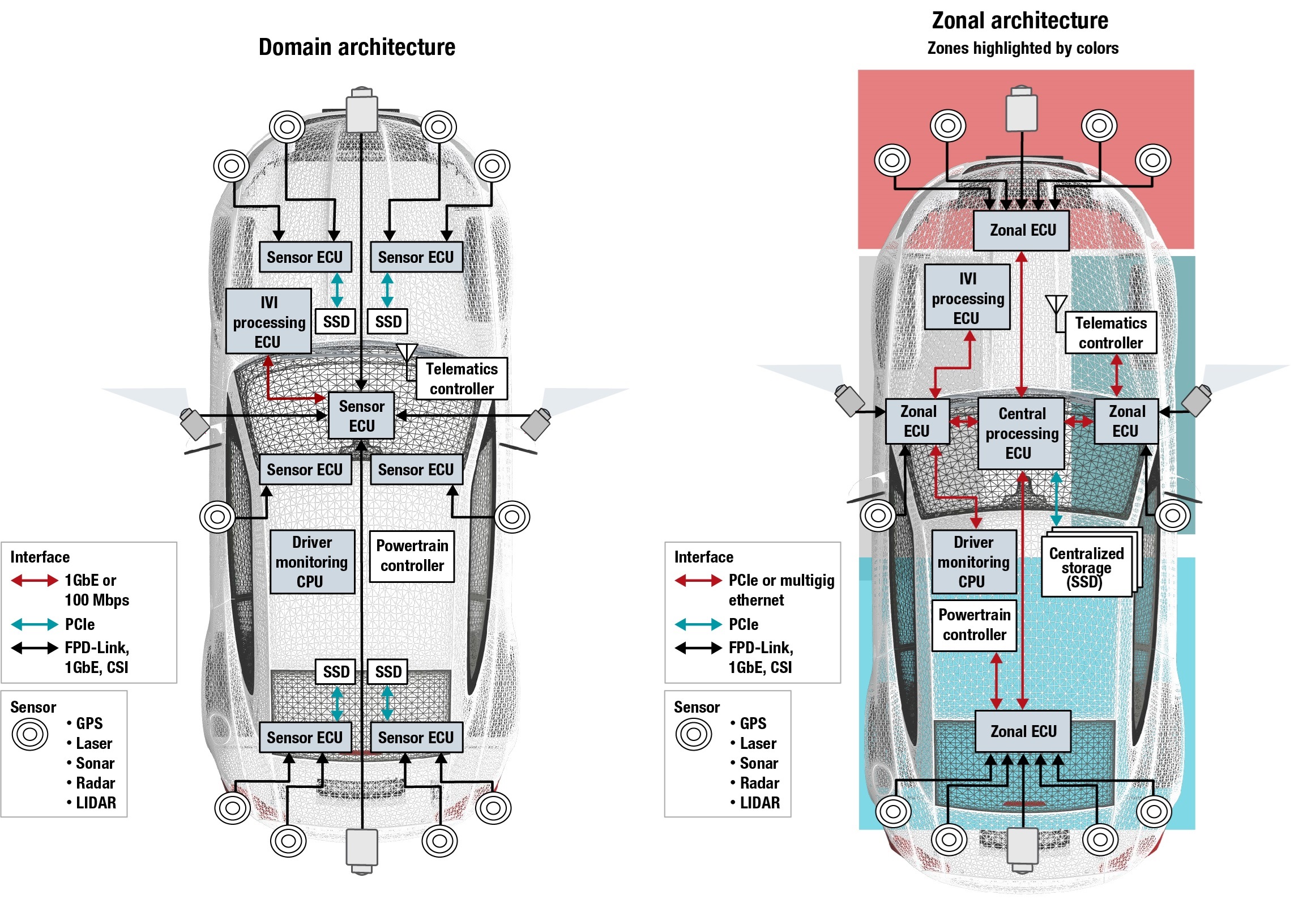SNLA381 March 2021
1 Introduction – Automotive Industry Trends in ADAS and Vehicle Connectivity
In recent years, the automotive industry has witnessed an impressive growth in computing throughput as data integration, machine-learning (ML), and artificial intelligence (AI) have become an integral part of the automotive ecosystem. According to a 2020 report by Global Market Insights, the market size for advanced driver assistance systems (ADAS) is expected to grow from a $35 billion industry in 2019 to over $60 billion by 2026 with >10% compound annual growth rate (CAGR). Such significant expansion is attributed to increasing vehicle safety regulations and driver assistance capabilities as vehicles reach full autonomy. With the onset of 5G networks revolutionizing vehicle-to-everything (V2X) connectivity for connected car applications, computing needs will further increase to enhance vehicle connectivity. Gone are the days of electronic control units (ECUs) that perform a singular function in an isolated environment. Today’s vehicles resemble data centers on wheels comparable to traditional High-Performance Computing (HPC) platforms deployed in enterprise servers.
As Original Equipment Manufacturers (OEMs) and Tier-1s prepare to support technological advances in both ADAS and vehicle connectivity, they are rethinking the automotive data backbone architecture. Rather than rely on computing to be implemented based on domains (for example, ADAS domain), future automotive data backbones are shifting from domain to zonal architectures. This is accomplished by incorporating local computing nodes, or zone controllers, to connect ECUs and interfaces based on location within their zone, regardless of their respective domain. These zone controllers then connect to a powerful central compute node that handles the data accordingly. The value of the zonal architecture approach is three-fold:
- Reduction in Overall ECUs and Cable Weight: By connecting ECUs and interfaces based on location rather than domain while incorporating more processing into a central computing node, the total number of ECUs and total weight of cables can be significantly reduced.
- Distribution of Processing Resources: It is economically infeasible to assemble a processor in a single package that has the computing power to handle the entire amount of Tera-Operations per second (TOPS) needed for full vehicle autonomy. Through shared processing enabled by the zone controllers and central compute node, the overall computing throughput and utilization of memory resources (e.g. solid-state drives (SSDs)) are optimized without over-stressing the system.
- Processing Redundancy: Backup processing options are needed to mitigate the risk of a singular point-of-failure. System redundancy, particularly by connecting physically distant zone controllers in a ring, presents an attractive option to avoid a failure scenario where one specific region of the vehicle is affected.
 Figure 1-1 Domain Architecture vs. Zonal
Architecture
Figure 1-1 Domain Architecture vs. Zonal
ArchitectureIn zonal automotive architectures, high-speed interfaces are required that enable both high bandwidth and low latency. In situations where safety-critical real-time processing is implemented, ultra-low latency becomes a must-have requirement. Fortunately, there is no need to re-invent the wheel when seeking an appropriate interface for these applications. The Peripheral Component Interconnect Express (PCIe®) ecosystem has successfully met the high bandwidth, ultra-low latency performance demands in industrial data centers, and this interface is well-suited to be used in a similar fashion for the automotive industry.